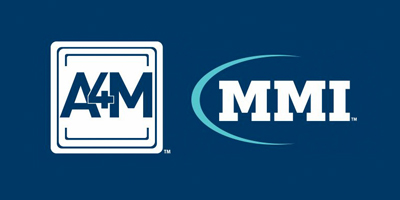This article was presented as an e-poster, entitled “Vedolizumab for pediatric patients with gastrointestinal acute graft-versus-host-disease,” at the 48th annual meeting of the virtual EBMT conference, held virtually on March 19-23, 2022.
Introduction
Vedolizumab, an anti-α4β7 integrin monoclonal antibody, impairs homing of T-cells to the gastrointestinal (GI) endothelium and acts as a gut-selective anti-inflammatory agent. Recent reports of the efficacy of vedolizumab in treating lower GI acute graft-versus-host disease (aGVHD) are promising, but experience in children is scarce.
We present a cohort of 13 pediatric patients who were treated with vedolizumab for GI aGVHD. Ten of the patients were treated for steroid-refractory disease, out of which, six suffered from severe (stage 3 or 4) GI disease before the first dose of vedolizumab. In the other three patients, vedolizumab was introduced early in the disease course. Median time between GI GVHD onset to vedolizumab treatment was 23 days (range 7–59 days), with a median of 3 doses (range 1–5) per patient.
GI GVHD staging was evaluated at various time points after the first vedolizumab dose, showing improvement in nine of the 13 patients. After a median follow-up time of 13 months (range 6–34 months), eight patients completely recovered, two had ongoing chronic colitis, and three patients died. During the vedolizumab treatment period, 38 infectious episodes were noted, most of them GI related. The unique activity profile of vedolizumab makes it an appealing treatment option for lower GI aGVHD, but caution for concurrent infections is warranted.
Methods
This retrospective study includes all pediatric patients who were treated with vedolizumab for GI aGVHD at Hadassah Medical Center between November 2018 to January 2021. Vedolizumab treatment was given at the discretion of the treating physician for patients presenting with predominant GI manifestations of aGVHD. Data were extracted from the electronic medical charts and included patients’ demographics, underlying disease, transplantation characteristics, time from transplantation to GI aGVHD onset, treatment modalities, disease severity before and after vedolizumab treatment, and at last follow-up. Post-HSCT Infections and other significant complications were collected throughout the period from vedolizumab treatment initiation until 18 weeks after the last dose. The study was approved by our institutional Helsinki review board.
The diagnosis of GI aGVHD was determined by the treating physicians, based on clinical findings, and supported by biopsies whenever clinically indicated. Steroid-refractory aGVHD was defined as progression of aGVHD after 72 h of ≥2 mg/kg methylprednisolone or lack of response after 7 days of treatment. Disease severity and response to treatment were evaluated and defined according to the Mount Sinai Acute GVHD International Consortium (MAGIC) staging criteria. This scale is based on stool frequency as a measure of GI aGVHD severity, which enables a feasible retrospective evaluation in pediatric patients.
Vedolizumab dosing was based on the recommended adult dosing of 300 mg per dose, reduced according to patient weight as follows: 100 mg for <10 kg, 150 mg for 10–25 kg, 300 mg for >25 kg, on weeks 0, 2, 6, and every 8 weeks thereafter, if indicated. Treatment was approved for off-label use in GI aGVHD by the local institutional review board. All treated patients’ guardians agreed and signed an informed consent to receive vedolizumab for an off-labeled indication.
The primary outcomes in this study were treatment efficacy and safety. Efficacy was evaluated by GVHD staging on days 7, 14, 28, and 56 after the first vedolizumab dose, in accordance with previous published experience showing early responses to treatment. Safety was evaluated by assessing significant clinical complications and mortality. The secondary outcome was long-term response, evaluated at last clinic follow-up.
Complications
Severe adverse events throughout the vedolizumab treatment period included two events of posterior reversible encephalopathy syndrome, two GI perforations, and five cases of septic shock. One case of death related to septic shock occurred 1 week after the first vedolizumab dose (patient #4). A second patient died a month after the fourth dose due to progression of GI aGVHD and multiorgan failure (patient #7). The third death (patient #12) ensued 2 years after the study period due to exacerbation of his GVHD.
Among all patients, 12 patients developed at least one documented infection during the period of vedolizumab exposure. A total of 23 bacterial, 10 viral, and five fungal infections were reported.
Discussion
In this case series, we present 13 pediatric patients treated with vedolizumab, an α4β7 integrin antibody, for GI aGVHD. The specificity of α4β7 integrin to the intestinal tissue makes vedolizumab an appealing treatment option for these patients. Vedolizumab was recently established as an effective treatment for IBD in adults, and clinical experience in pediatric patients is rapidly expanding. Based on promising results in recently reported case series we started treating pediatric patients with GI aGVHD with vedolizumab. Patient selection for vedolizumab treatment was based on presence of either refractory GI GVHD requiring additional treatment modalities, or high-risk malignant disease necessitating steroid sparing treatments.
Our cohort includes patients with various grades of GVHD and different concomitant treatments. Six of the patients suffered from severe (stage 3 or 4) GI disease before the first dose of vedolizumab, and all had GVHD involvement of other organs (Table 3). Ten of the patients were treated for steroid-refractory disease, and in the other three patients, vedolizumab was introduced early in the disease course and was used as a steroid-sparing treatment (patients #3, #5, #6). In 10 of the patients, vedolizumab was the third-line treatment or greater.















